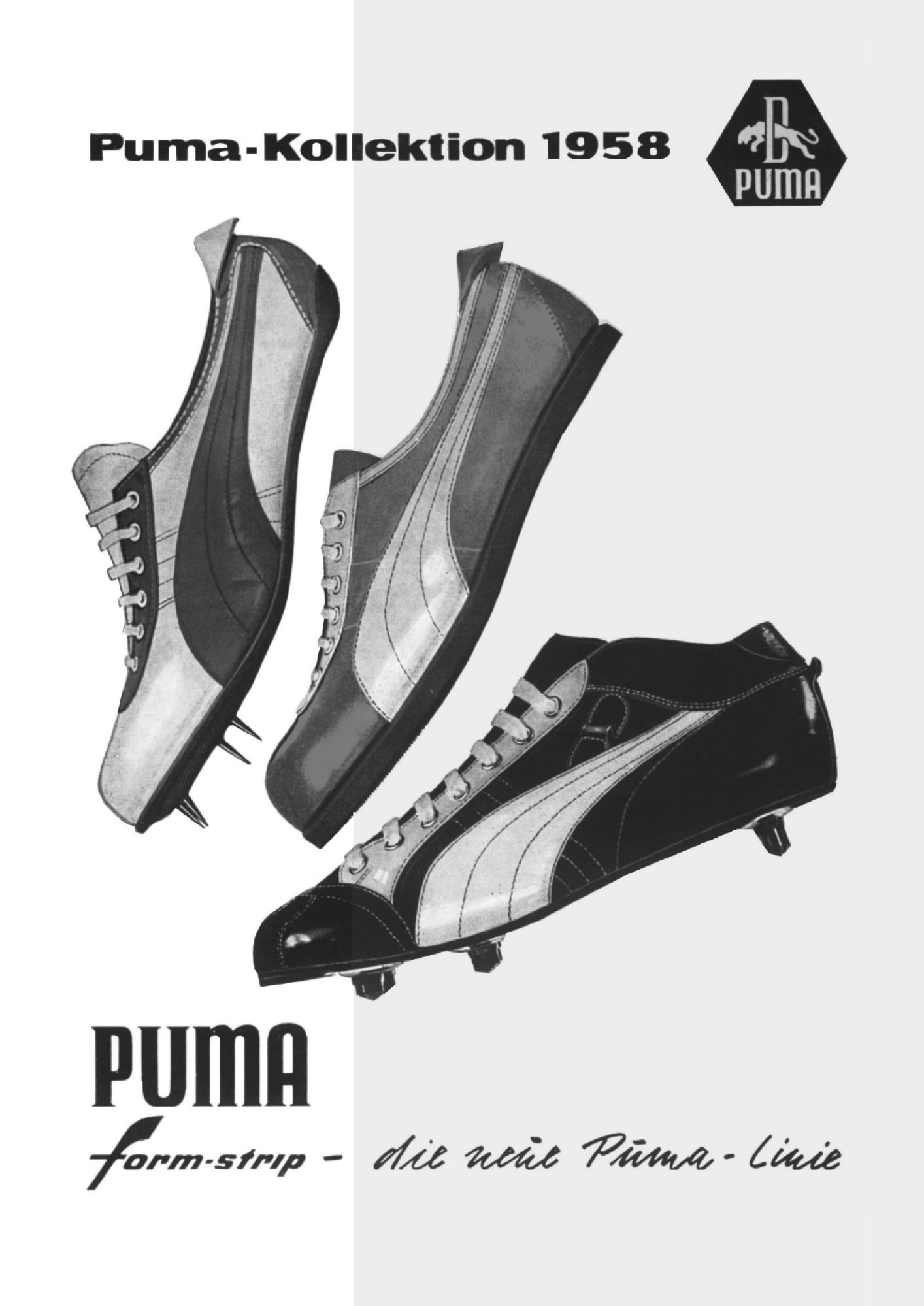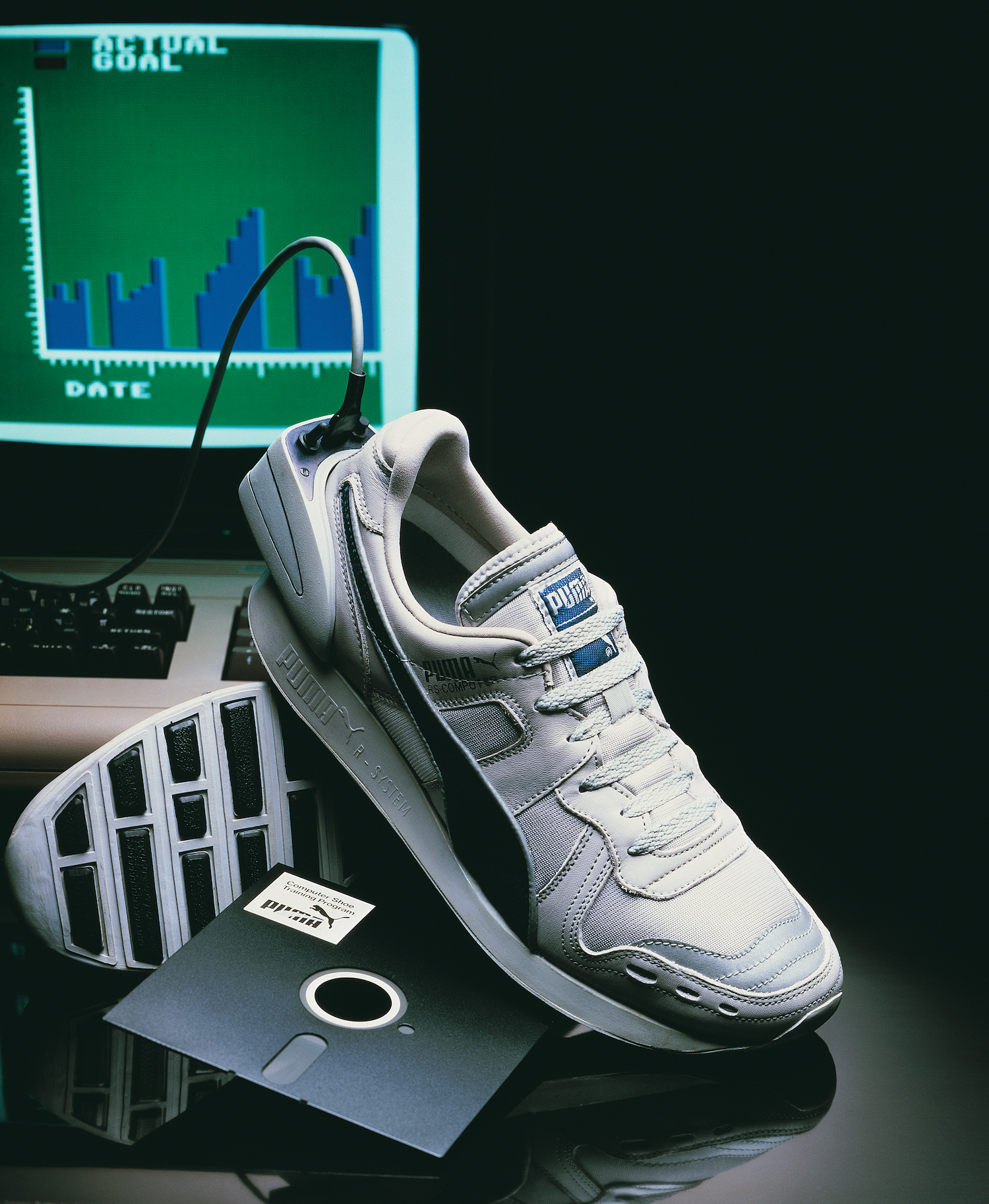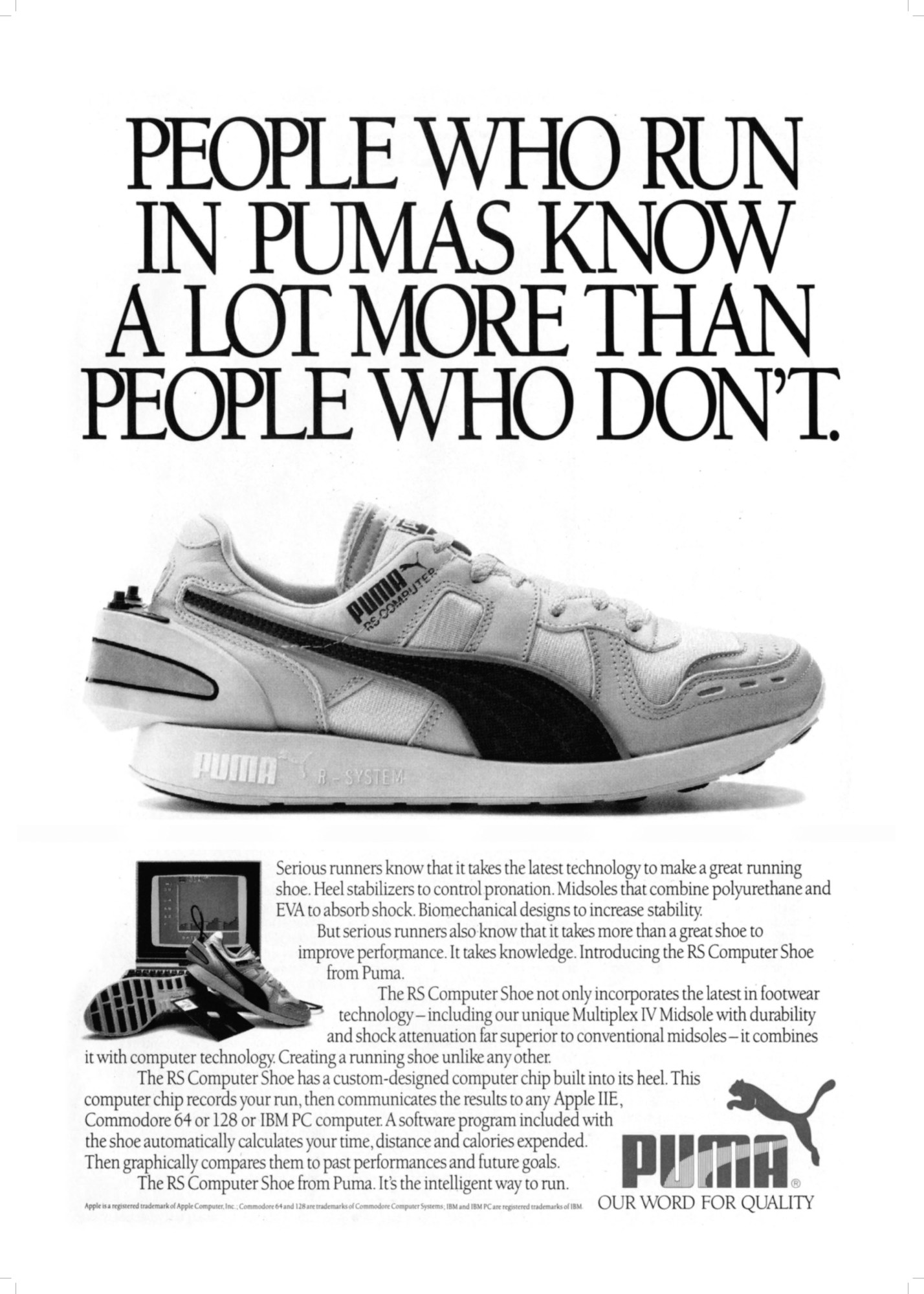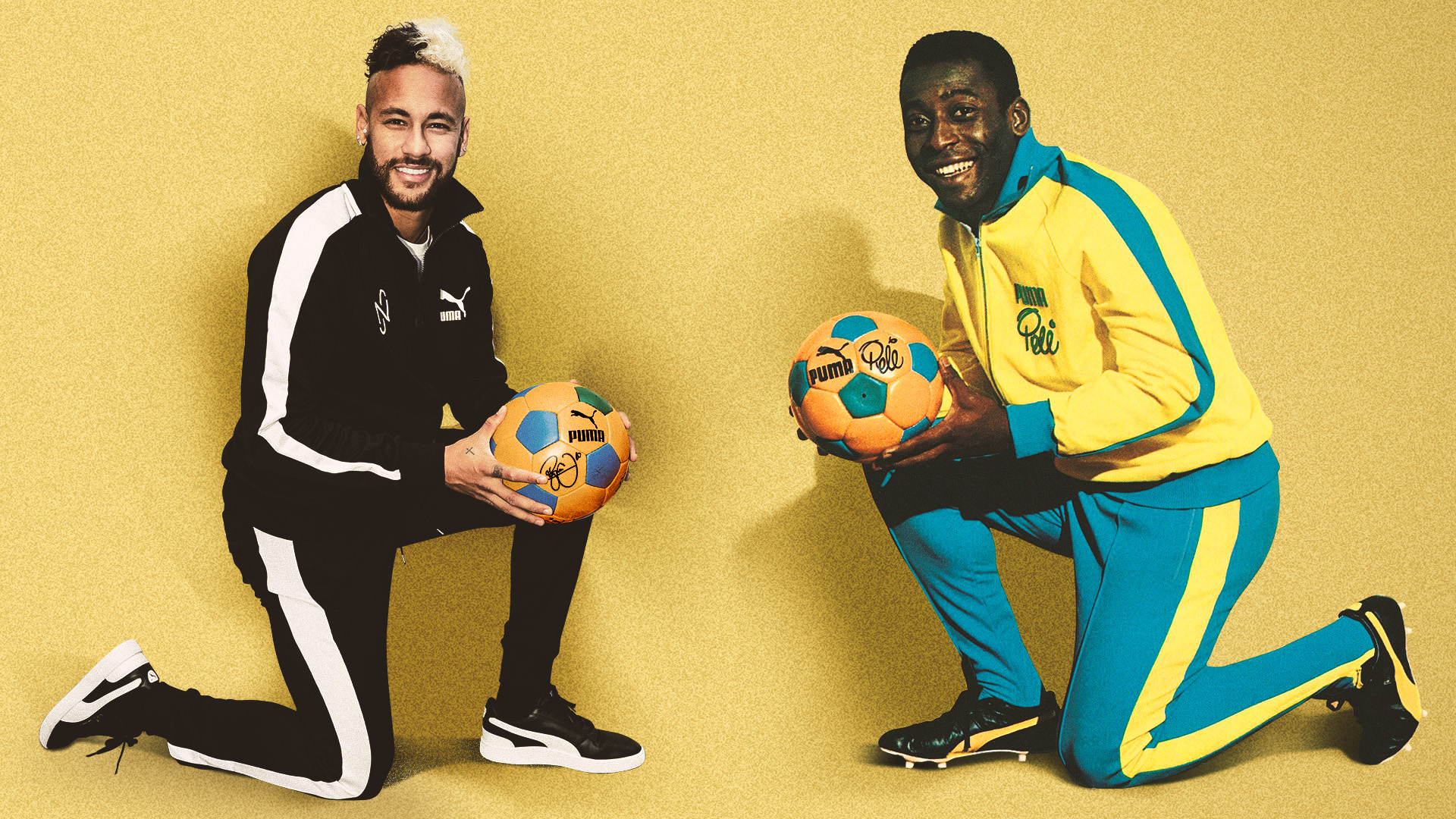Toasting a 75th birthday is always a momentous occasion – a moment to look back and celebrate the highlights of a long life well lived. In the case of a brand like Puma, though, taking stock of all the accomplishments amassed over a lifetime is no mean feat – there is, after all, a hell of a lot to take into account! For the German sportswear titan, the three-quarters of a century since Rudolf Dassler founded Puma in the Bavarian town of Herzogenaurach have brimmed with globally impactful, pioneering moments – not just on the track and field, but in the arenas of fashion and pop culture, too.
Did you know, for example, that, in 1952, Puma was the very first sports outfitter to create a football boot with screw-in studs? Or that, the late great king of the pitch Pelé wore the Puma King boot when crowned ‘Player of the Tournament’ at the 1970 World Cup? Or that the brand was the first to bridge the then-gaping gulf between fashion and sport in 1998, by way of a collaboration with none other than Jil Sander. Indeed, at even a brief glance, it becomes abundantly clear that Puma is a brand with an incredible range of achievements worth trumpeting as it rings in its 75th year.
And yet, while wholly cognisant of the significance of the occasion, Heiko Desens – Puma’s Global Creative Director – and his team have their eye trained firmly on the future, and how Puma’s proud legacy can be carried into it. For its 75th anniversary campaign, the brand has nodded to its storied history, placing archival heroes like the single-striped T7 tracksuit at the front and centre of the story – rather than lean into the nostalgic value of its archive, though, the campaign highlights the perennial, enduring relevance – how Puma has shaped sport and style culture over the past 75 years, and how it will no doubt continue to do so for many years to come.
To celebrate Puma’s big birthday, we sat down with Heiko in Dubai during the brand’s activation during Sole DXB. Here, he discusses the significance of the anniversary, the values Puma embodies today, and what this anniversary year holds in store.

Hi Heiko! So, tell us: what does Puma’s 75th anniversary mean for you as the brand’s creative director?
What I’m really pleased about is that we’re really highlighting the timelessness of the brand, and making it a core part of this campaign. We’ve been pulling out looks, vibes, colours and codes from our archive — from the 70s and 90s, for example — and bringing them back. At the same time, we didn’t want it to feel like we were just reissuing things from our back catalogue — we wanted to ensure it had a fresh feel to it. When it comes to the clothes themselves, we’ve focussed on pieces like the T7, which is a tracksuit with a simple athletic stripe down the sleeve — elements that haven’t necessarily been noticed that much. And that makes me really happy because it’s such an inclusive design. It works everywhere, and on everyone, and it has a comforting timelessness to it.
It’s about drawing out these aspects of Puma that have always been relevant, right?
Yes, and it didn’t really require us to do that much. Previously, we were moving pretty fast, creating new things and changing things up perhaps a bit too rapidly. But there’s a certain confidence to be found in maintaining a certain style or look for a longer period of time. A very quick fashion model works with some companies, but we don’t want that to be our strategy.
What were some of the most interesting things that you came across in your process of reflecting on 75 years of Puma and its archive?
There are a couple of moments that I find absolutely fascinating as a designer and creative. One example comes from the early 2000s when streetwear and sneaker culture first started to peak. Back then, Puma did quite a daring move in terms of design, by completely inventing a new sneaker look — the Mostro. It couldn’t be categorised — it wasn’t a tennis shoe, it wasn’t a basketball shoe, it wasn’t a running shoe. It was just a sneaker. It had a bit of a martial arts flair to it, a bit of a surf or outdoor vibe, but you really couldn’t place it. It was intentionally designed from a very disruptive, visionary angle. Till now, that shoe is still one of the most disruptive and surprising sneaker designs — so much so that it was widely copied. It was such an important milestone for us, and it really changed the whole industry.
Another one, of course, is the collaboration we did with Jil Sander, who I’m a huge fan of. It was really the very first time that fashion and sportswear really connected. Because, before then, there was a certain snobbishness from fashion towards sportswear. Couture, prêt-a-porter, the avant-gardists — there was no element of sport in their worlds. But Jil was really a visionary. I had the pleasure of meeting her a couple of years back, and she spoke of how she just wanted to prioritise comfort. She spoke of how she’d broken the rules by introducing her brand of minimalism, and just wanted a sneaker to go along with it. I’m not sure if she, or Puma, was aware of the significance of what they were doing at the time, but looking back, it was a monumental game changer for the industry.

75 years on from its founding, what does Puma represent today?
One thing is our strong standing in regard to diversity and inclusivity. It’s one of our strongest assets. And that diversity is organic. Almost 50% of our employees are women-identifying, and that also extends to our senior management. It makes me really proud, and I think that it brings a diversity of energies to the table, and really informs how our stories are told. I also think that the founders’ approach towards being really inclusive in terms of supporting athletes, no matter where they came from or their background, is still at the heart of what we do.
Could you tell us a bit about the messaging behind the campaign and the energy you hoped to conjure with it?
The concept is actually quite simple — it’s really about touching base on the big milestones of the past, especially the ones that not so many people know about. Not a lot of people know about the Mostro, or Jil Sander, or the fact that Serena Williams took her first steps in the industry with us. They’re things that we’re really proud of and want to share, and that’s what the campaign is really about. It’s not about being caught in the past, but rather reflecting on these special moments, and what sets Puma apart. It shows that we’ve been here for a long time, constantly creating these big moments.

Without giving too much away, what are some of the things we can look forward to over the course of your anniversary year?
One thing I’m really looking forward to is our second Perks and Mini drop and I am super excited about the Puma Plexus JuunJ – my new favourite. And there are a few other surprises I’ll have to keep up my sleeve. We’re also launching the new King football boot and there are amazing developments with our performance shoe technology — Nitro — which is really successful for us at the moment, and by the end of the year, we’ll be launching our very first trail shoe — which is also very sexy! And much more, which you’ll have to stay tuned for! Will we be seeing a Puma runway return? That I can say yes to! We haven’t locked in the details, but there will be another Fashion Week appearance – we haven’t decided yet on the exact timing and format, but we are sketching out the first plans of what it looks like now.
Looking to the future, what excites you most about Puma’s potential?
It’s actually something that we started last year — our Web3 presence. It started with our NFT launch at New York Fashion Week, and the inclusion of the NFT shoes as part of the show. The combination of the digital and physical world is really interesting for us, and it’s something that we really want to push further. It’s quite rare that you have a connection between your physical projects and your Web3 experience — they’re often kept apart as two separate worlds. We believe that in the future, they’ll come much closer together, and we’re spearheading this approach. And we also want to use that to find new ways of activating our history, too. In January, we’ll be launching a round of PFPs — digital artworks that you can use on all social networks — and it’s based around a mascot from the archive, Super Puma. There was even a Super Puma comic! We’re now bringing it back, and rolling out stories around it early this year. But looking forward is what makes me most excited about my job. We have so many projects in the works that are focussed on fusing technology, sport and our archive. It’s something that I think will bring Puma to a host of new communities online, and have such a significant impact for us as a brand.

Credits
All images courtesy of Puma
